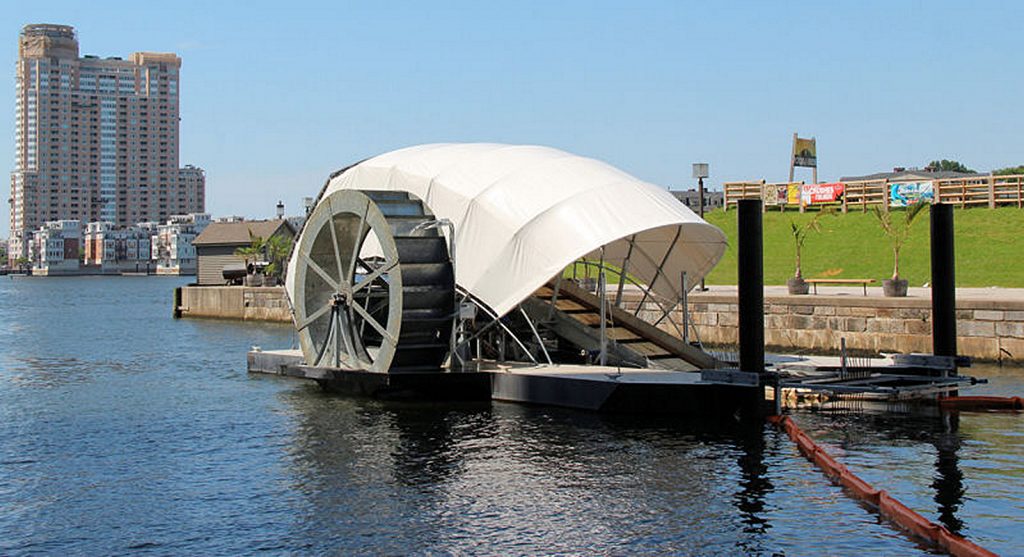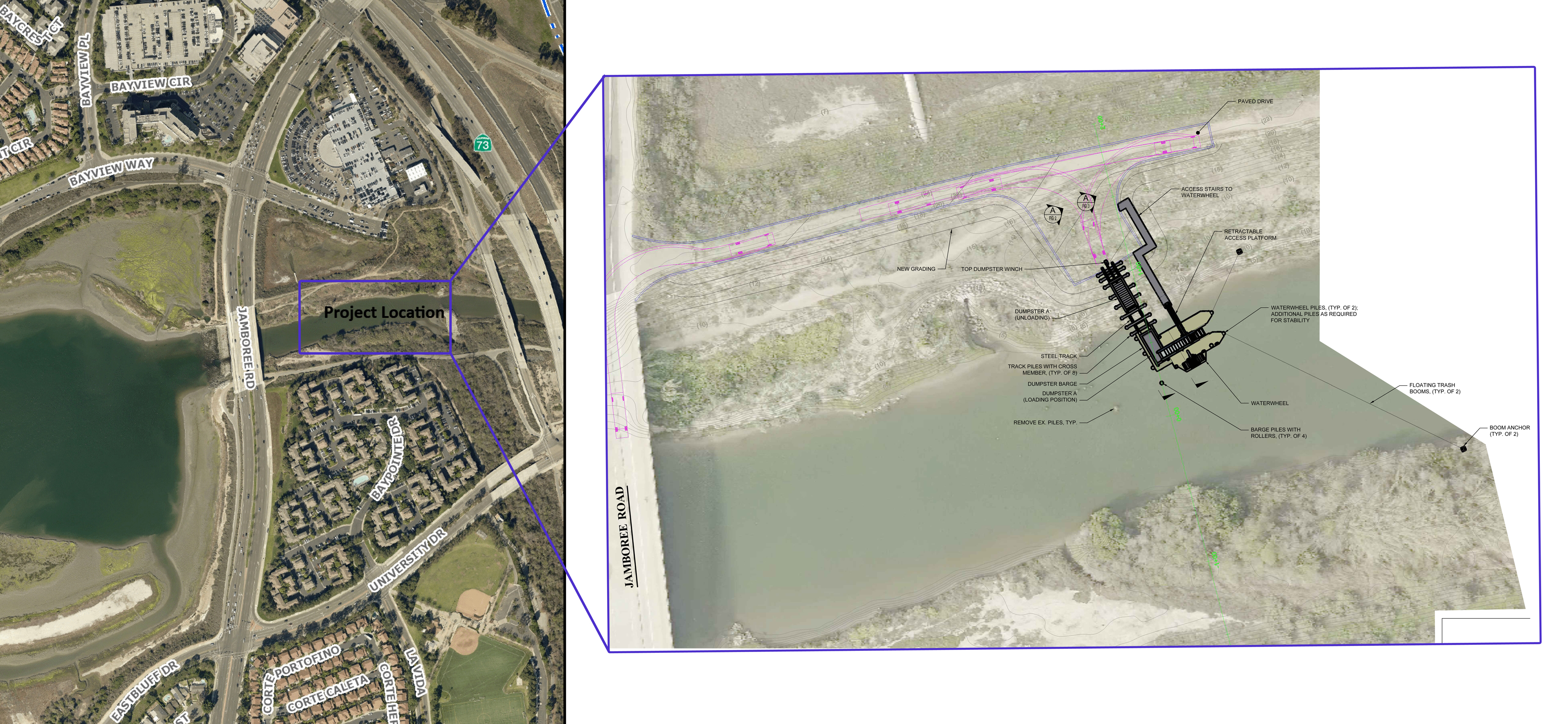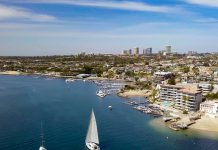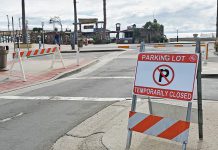
— Photo courtesy of Billy Dutton/Baltimore waterfront
A solar-powered, trash-collecting water wheel device that aims to capture garbage flowing down San Diego Creek and into Newport back bay, the harbor, and the ocean, got an unanimous nod of approval by City Council this week.
Council voted 5-0 to approve the Mitigated Negative Declaration and Mitigation Monitoring and Reporting Plan in accordance with the California Environmental Quality Act for the Newport Bay Water Wheel.
The water wheel is funded through a grant from Ocean Protection Council of $1.68 million, as well as $12,000 from Help Your Harbor (of that amount, outdoor clothing company, Patagonia, came forward with $10,000) and city budget of $8,000 to fund the environmental portion of this work. Staff anticipates the OPC grant funds will cover the design and construction cost of the project for a total project budget of $1.7 million.
Councilman Kevin Muldoon, whose district covers the area where the water wheel is proposed to be placed, is excited about the project and use of technology to help clean the water.
Not everyone is as excited as he is, Muldoon noted. Some residents have criticized that it may be an eyesore or that it’s in their line of sight, he explained.
“But really it’s going to beautify the harbor for generations to come,” Muldoon said. “So it’s worth the man hours and financial sacrifices that the people have made.”
The system is basically a stationary, floating barge with a conveyer belt on one end, a standard-sized trash dumpster on the other end, and a water wheel in the middle.
Pylons funnel debris floating in the water toward the conveyer belt. Solar powered water pumps turn the water wheel, which moves the conveyer belt, which carries the trash into the bin on the other end of the barge.
When the dumpster is full it’s removed and a new, empty one is put in its place. An electric boat would slowly pull the full bin to shore for disposal.
The entire thing would be approximately 50 feet long and 24 feet wide.
It would be placed approximately on the east side of the Jamboree Road bridge in the San Diego Creek, which is the entry point for much of the debris coming into the bay.
The aim is to help alleviate some of the trash load floating into the bay, said Public Works Director Dave Webb. It’s quite a big area that drains into the bay, he added.
About 80 percent of the material that enters the bay comes from San Diego Creek, Webb explained at a previous meeting.
A water wheel won’t be able to catch all of the rubbish, particularly very small pieces of trash, but it will still stop a “sizeable” percentage of the debris floating into the bay.
The primary engineering and environmental review phases for the project are completed. The next step is to work on the OPC grant agreement.
Staff hopes to get the required permitting by summer of 2020. A more detailed design should be ready by winter 2020, with construction proposed to start around spring or summer of 2021. Construction should take about six to eight months.
Other coastal cities have used the water wheel with success. The primary example (and what Newport’s water wheel is based on) is Baltimore, which uses a solar powered water wheel to collect trash from Jones Falls River before it enters the harbor.
Baltimore’s “Mr. Trash Wheel,” which has its own twitter and facebook page, has removed more than 1.5 million pounds of trash since its inception in May 2014.
Councilwoman Diane Dixon, who chaired the Water Quality/Coastal Tidelands Committee when the water wheel idea was initially brought forth, called the project environmentally innovative.
It is proving its effectiveness, she noted, as staff cited several other cities implementing a similar water wheel project.
“This is really going to be exciting,” Dixon said.

— Courtesy of city of Newport Beach




